Grow Your Own Healing Garden With These 10 Medicinal Herbs
Medicinal herbsIf you appreciate natural remedies and are looking for ways to grow your own herbs, we’ll help you get started with planning, planting, and growing a medicinal herb garden.

Growing your own medicinal herb garden is a great way to access the healing properties of plants right from your own backyard. This guide will walk you through everything you need to know to get started, from choosing the right herbs to planting and maintaining your garden.
A Beginner’s Guide to Starting Your Own Medicinal Herb Garden
For thousands of years, herbs have been used for medicinal purposes. While we now have the technology to study why certain herbs help with specific conditions, ancient cultures just had their experience to go on. They used these herbs because they saw the benefits. Now scientific studies are catching up with their anecdotal experiences.
Please note: This is informational for growing purposes only. We’re not medical professionals but gardeners who love to grow.
Benefits of growing your own medicinal herbs
One of the most significant advantages of growing your own medicinal herbs is having control over the quality of the herbs you use in your remedies. You can ensure that your herbs are grown organically without any harmful chemicals or pesticides.
Growing your own medicinal herbs is also a sustainable way to provide you and your family with healing benefits without foraging. And in the case of some medicinal herbs like white sage, you will protect a threatened species from over-harvesting or poaching.
Another benefit of growing your own medicinal herbs is that it can save you money in the long run. Store-bought remedies can be expensive, and you may not always be sure of their quality or effectiveness. By growing your own herbs, you can make your remedies at a fraction of the cost.
Additionally, gardening can be therapeutic and help reduce stress and anxiety levels. It can also be a fun activity to do with family and friends.

Planning Your Medicinal Herb Garden
There are several things to consider when planning your medicinal herb garden. You’ll need to decide what to grow, where to plant, and how to grow and harvest your herbs.
What herbs do you want to grow?
First, when planning your medicinal herb garden, you will want to know which herbs are most useful. You can choose some of the most popular healing herbs or the most rare. It’s up to you which ones to plant. What you decide to grow will depend on what remedies you want to make and what your family will use.
Second, consider the location. How much space do you have? Will the herbs you want to grow work in your gardening zone, or will they need special attention? Do you want to grow in containers? Your location can determine what herbs to grow and how to grow them. You may choose to create a specific space for medicinal herbs. Or you can plant them with other flowers and herbs throughout your garden. There may be medicinal herbs you’re already growing because they’re beautiful flowers, such as yarrow, echinacea, and calendula.
After you’ve picked what to grow and where, you’ll need to check your seed packets to know which herbs are perennial and which are annuals. Many annuals will self-sow, and you can let them go to seed for a new crop in the spring. Some perennials will last for years and years, while others will need to be reseeded after several years as they become more woody and have less usable leaves and flowers.
Planning for reseeding or growing for many years can help you decide where to put your plants.
Then you will want to determine how much space each herb needs. Some issues on space to consider are: Will this herb shade out other plants? Does this herb spread? The answer to these questions will determine which plants to put together and which to separate.
Another thing to consider is what parts of the plant you will be using. For some plants, the roots are used for medicinal properties. So plan on digging them up when it’s time to harvest. Knowing you need to dig up roots will mean you may not want other plants too close to avoid disturbing them.
Top 10 Medicinal Herbs to Grow
Every medicinal herb gardener should have on hand the most helpful herbs for healing colds, settling stomachs, and soothing skin. You can transform your garden into a healing sanctuary with these top 10 medicinal herbs.
Calendula
Calendula is a popular medicinal herb for burns, wounds, and rashes. It is used for its ability to stop bleeding and help skin heal. The skin-healing properties of calendula make it a top ingredient in various soothing ointments.
Chamomile
Chamomile is a must-grow herb for a medicinal garden. This soothing herb makes the world’s most popular cup of tea. It is the tea of choice for soothing cramps and nausea and helping the mind and body relax. Chamomile flowers are also used externally to heal eczema, acne, and diaper rash.
Lavender
The smell of lavender makes this medicinal herb an excellent choice for all kinds of home remedies. The aromatic flowers can be added to lotions, soaps, and creams. Lavender flowers are also edible and can be used to flavor ice cream, chocolate, honey, sugar, a cup of tea, and more.
Learn all about growing and using lavender.
Holy Basil
Holy basil has been used as a medicinal plant for over 3,000 years. All parts of the plant are used for practical and ceremonial purposes. Holy basil tea can be consumed daily to help regulate cortisol and blood sugar.
Echinacea
Echinacea is very easy to grow. It is a well-known medicinal plant and has beautiful flowers that can be grown for flower arrangements. Echinacea is used for its antiviral, antibacterial, and anti-fungal properties. The roots and leaves are added to creams and ointments for external applications. Echinacea tea is also a popular remedy for coughs, colds, and internal infections.
Lemon Balm
For 2,000 years, lemon balm has been used to ease the heart and take away sadness. Lemon balm is also prized in the garden for use as an insect repellent. And because of its antiviral and antibacterial properties, it can be used externally to treat sores.
Bergamot (Bee Balm)
Bergamot is a top medicinal herb used as a bitter digestive aid, expectorant, or gargle to ease cold and flu symptoms. Its astringent properties make it excellent for soothing gum infections and sore throats. Or it can be used topically in a tincture to wash wounds and soothe rashes.
Borage
Borage has many medicinal uses. From its antioxidant properties to its beneficial omegas, borage is a valuable plant for a healing garden. It is also an excellent companion plant and can repel pests.
Hyssop
Hyssop has been used for centuries for both culinary and medicinal purposes. It adds a distinctive taste to meat marinades and pasta dishes. Hyssop is also used for attracting bees and other beneficial insects in the garden. The anti-fungal and antimicrobial properties of hyssop can also be used to increase the shelf-life of food.
White Sage
White sage is valued for its use in healing. Dried white sage leaves are burned as incense and used in cleansing ceremonies. White sage has a high eucalyptol content, making it an excellent medicinal herb for aromatic steam remedies, teas, and skin ointments.
While we have our ten favorite medicinal herbs, there are many other herbs that have beneficial properties. If you have room for a more extensive medicinal garden, these are some more herbs worth planting:
Planting and Caring for Your Medicinal Herbs
Planning your healing garden will make your planting and tending much easier. Once you know what you’re going to grow and where, it’s time to start sowing your medicinal herb seeds.
Preparing the soil for a medicinal garden
Most herbs do well in rocky, well-draining soils. Usually, no additional fertilizer is needed.
Herb seed starting tips
Starting your medicinal garden from seed is an economical way to grow lots of different herbs. With some simple seed-starting tips, you’ll find many of these herbs easy to grow.
When starting herbs from seed, it is important to follow the recommendations on the seed packet. By following the recommendations for soil temperature, cold stratifying, or scarification, you will have much better germination rates with less frustration.
So don’t skip the step of cold stratifying for your seeds that require it. We’ve tested this and found that lavender seeds germinate very well after cold stratification.
Keeping your seeds moist is vital for germination. Use a humidity dome to keep the seeds from drying out. Once they have germinated, water from the bottom to keep the soil moist and avoid damping off.

Transplanting and Direct Sowing Herbs
Transplanting seedlings the right way will lead to healthy plants. Take time to acclimate your medicinal herbs to their outdoor conditions.
If you are direct sowing, make sure you plant at the right time and temperature. Some herbs can be planted in the winter, and some need to wait for spring.
Herb Garden Maintenance
Maintaining a medicinal herb garden can be a pleasure. Once your herb garden is in the ground, it needs simple care.
Regular watering will keep the roots from drying out. With well-draining soil, you can avoid root rot.
Pruning and cutting back as needed will keep the plants healthy without getting overgrown. You can read our growing guides for each specific herb.
Usually, no additional fertilizer is needed. However, each year you could apply a layer of well-rotted compost.

Harvesting and storing your herbs
Harvest medicinal herbs at their prime for the best results. Some herbal remedies use roots, while others use leaves and flowers.
Cut leaves and flowers early in the morning after the dew has dried. Use immediately for the highest potency.
Medicinal herbs can also be dried for storage. Thoroughly dry herbs before storing. Store dried herbs away from heat and light in airtight containers.
More information on specific harvesting tips for each herb is found in our Planter's Library.
Common herb garden mistakes to avoid
Be careful of using herbicides and other toxic chemicals on your plants.
Too many plants in too small of a space. They won't have room to grow if too close together.
Letting things get out of hand. Some herbs are slow-growing, but others will need to be pruned or harvested frequently to prevent them from becoming overgrown.
Whether you're growing healing herbs for tinctures, teas, or soothing ointments, you’ll always have the freshest ingredients when you grow your own medicinal herb garden.
Start with a few of your favorite medicinal herbs, then add some new ones as you become more familiar with growing them.


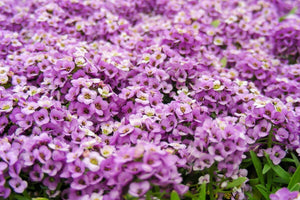
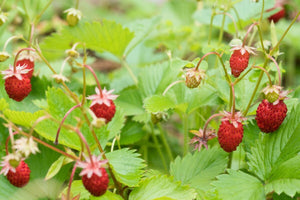
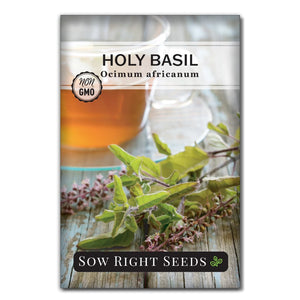
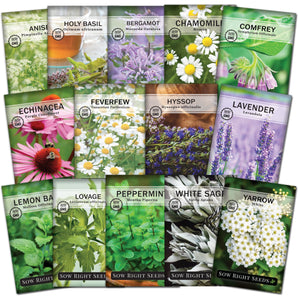
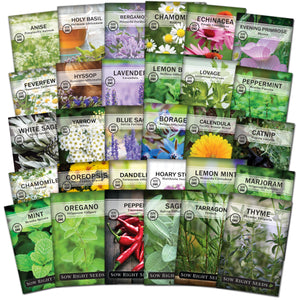
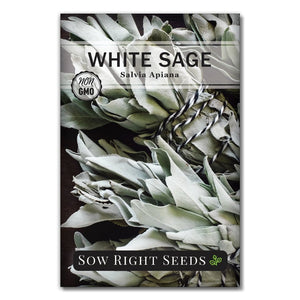
We appreciate your kind words.
Very good article. Super informative. I love growing herbs.
Great learning post. Excellent information, can’t wait to get started next Spring! Many thanks and all the best!
Leave a comment